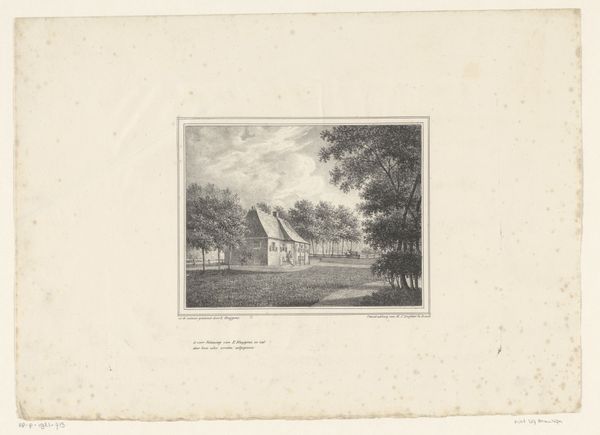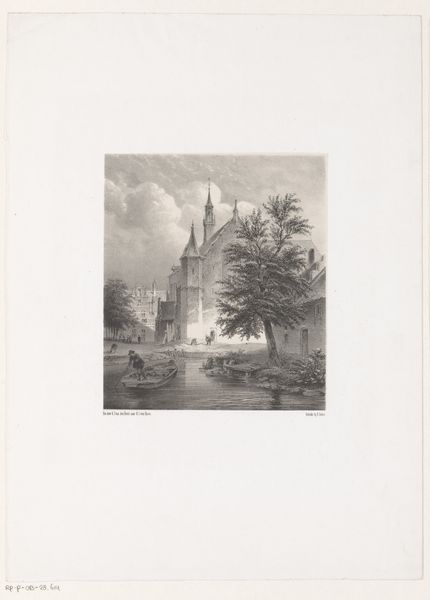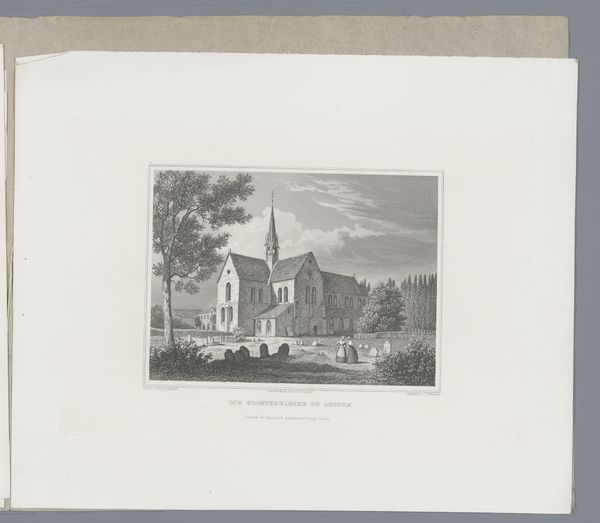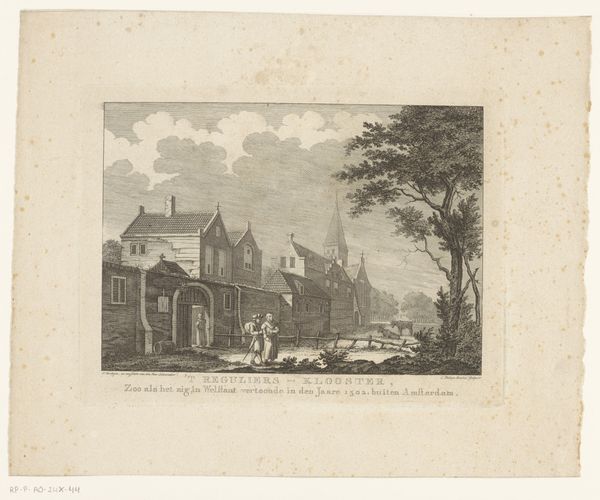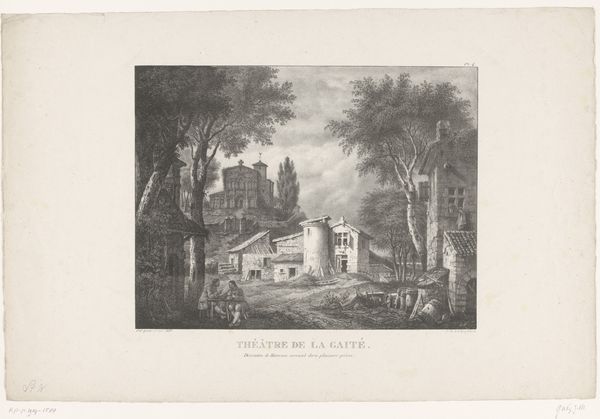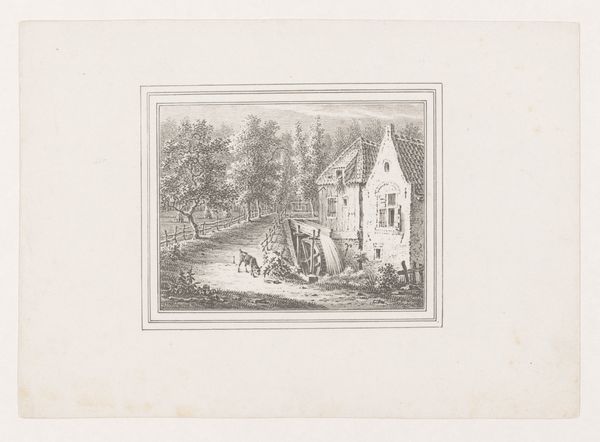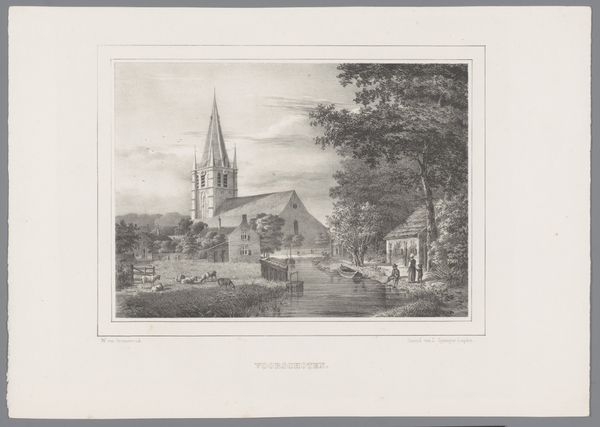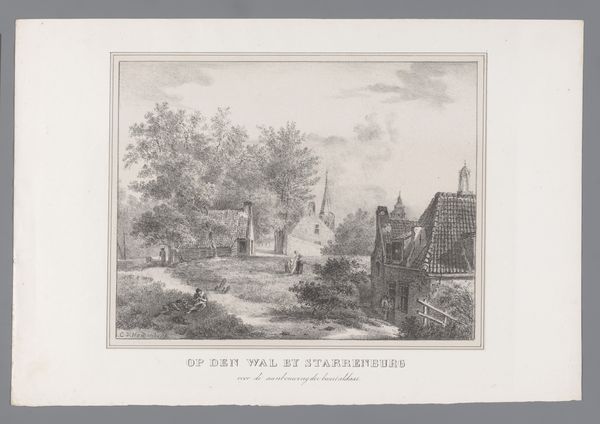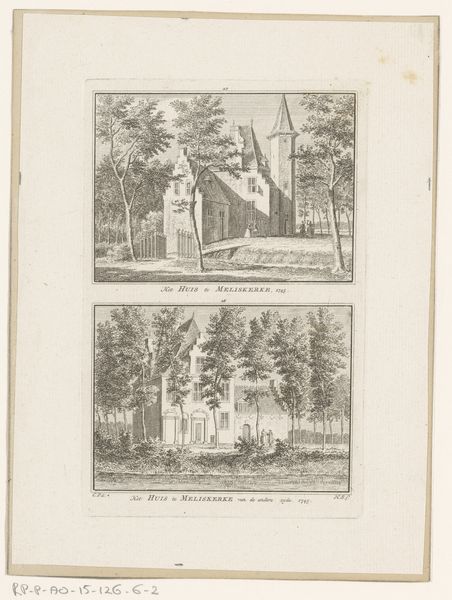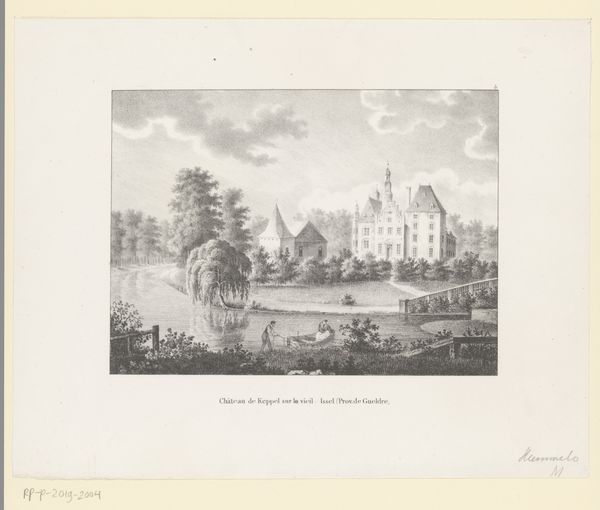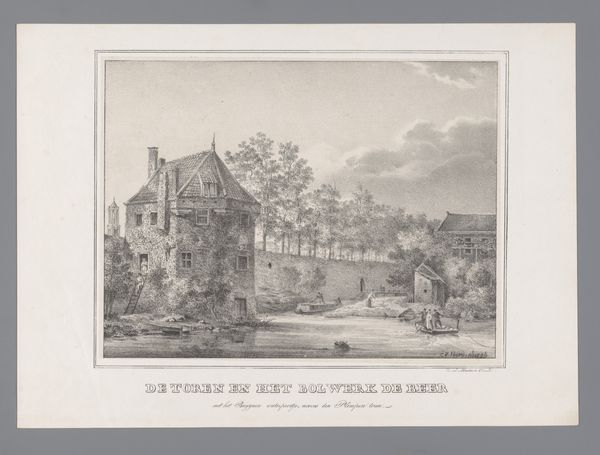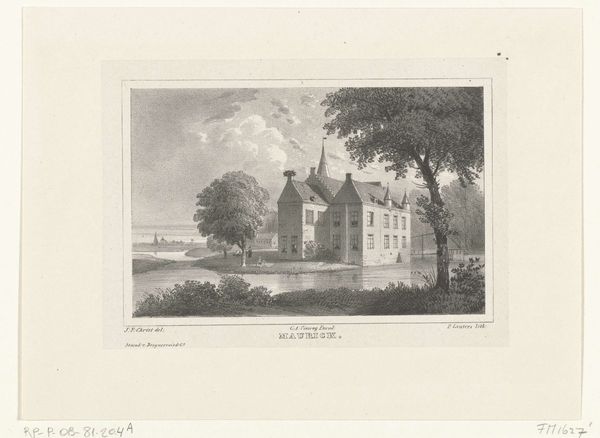
drawing, lithograph, print, paper
#
drawing
#
lithograph
# print
#
landscape
#
paper
#
romanticism
Dimensions: 370 × 27 mm (image); 480 × 687 mm (sheet)
Copyright: Public Domain
Editor: We are looking at Domenico Quaglio's "Church of the Pilgrimage in the Tirol," created as a lithograph in 1818. The church has a strong presence in the landscape, but there’s also a certain delicate stillness. What strikes you most about this piece? Curator: I'm immediately drawn to how Quaglio positions the church not as an isolated monument but in relation to the rushing water and surrounding nature. How does this interplay challenge the dominance of religious architecture during this era? Consider the power dynamics in landscape art. Editor: That's interesting! I hadn't considered that interplay. It almost feels like nature is reclaiming the space, softening the strict lines of the church. Curator: Precisely. The Romantic era saw a surge of interest in the ‘sublime’ in nature, but let's also think about the role of pilgrimage in relation to social mobility and class. Was this church truly accessible to all, or did socio-economic barriers shape the spiritual experience? How did it challenge or reinforce existing hierarchies? Editor: So, looking beyond just the aesthetic beauty, you're prompting us to think about the socio-political dimensions within this idealized landscape. The print suggests accessibility, but that may not be reality. Curator: Absolutely. And think about the printing press: how did the print medium democratize this imagery, but maybe also sanitize the often challenging realities for many at the time? Who were these landscapes really *for*? Editor: That adds another layer! I see how even a seemingly straightforward landscape drawing can spark so many questions about power, access, and representation. Curator: Indeed. Examining historical artworks through contemporary lenses enables us to dissect the nuanced ways in which they both reflect and shape societal narratives. Editor: It definitely gives me a lot to think about regarding how we interpret landscapes from this period. Thanks for pointing that out!
Comments
No comments
Be the first to comment and join the conversation on the ultimate creative platform.
